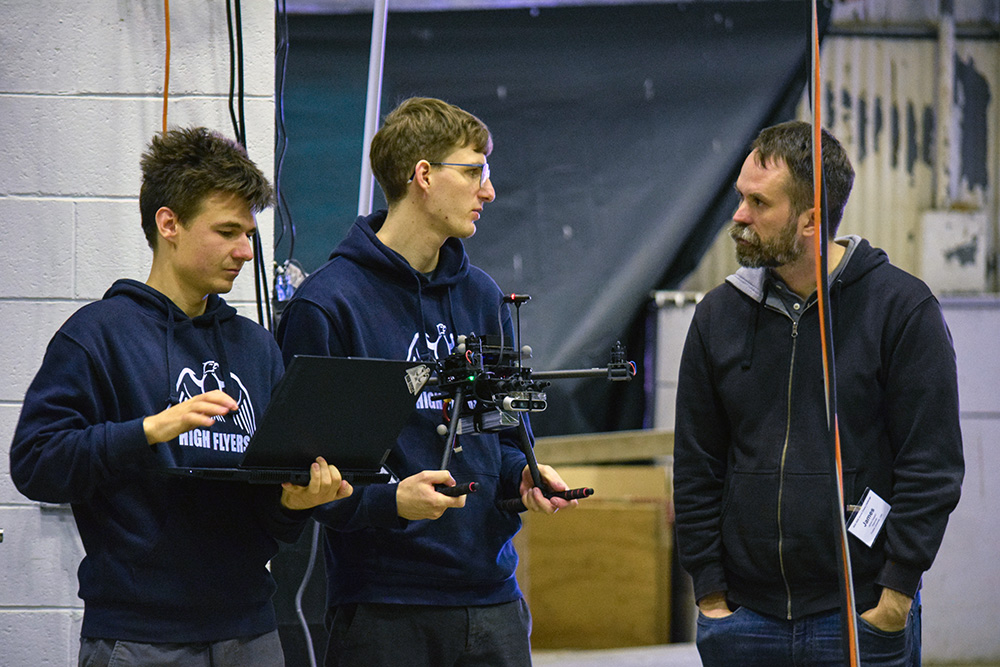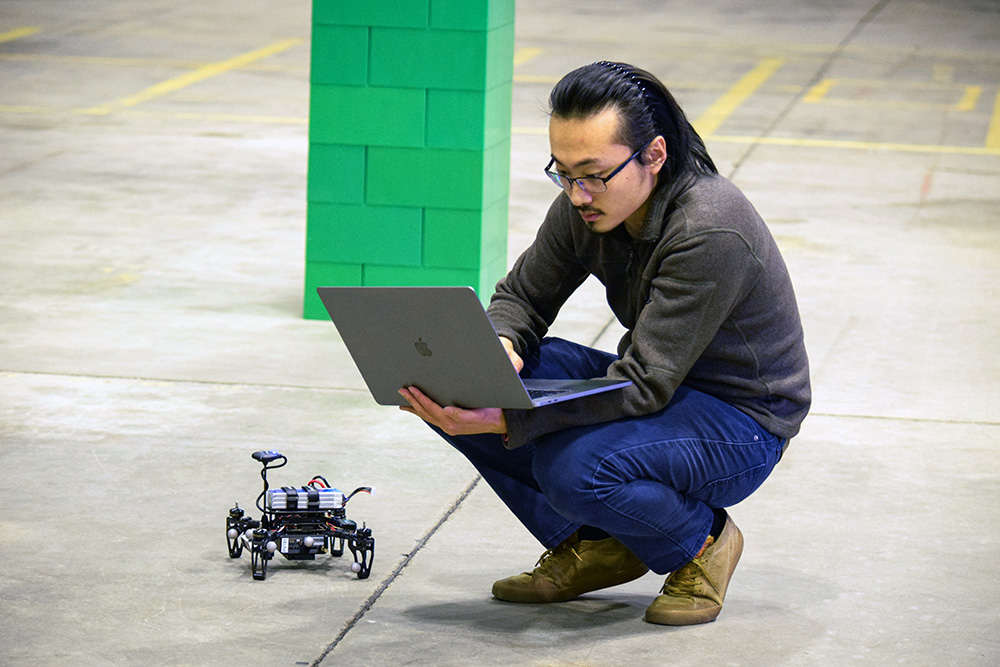Purdue facility supports drone automation through international competition
| Author: | Alan Cesar |
|---|

Chirps from drones and birds alike echoed in the vast open space of the Purdue UAS Research and Test facility (PURT) as students from Italy, Poland and China prepared their neural nets for competition.
Anticipation filled the hangar when each drone buzzed to life. Soft-spoken but scrappy student teams, their faces lit by laptop screens as they monitor telemetry, were vying for the top spot in the 2023 UAV Chase Challenge. On April 21 and 22, they came together to see who could develop the best lightweight AI for autonomous drone control.
Flying drones in a tiny city

Though drones have raced through this building at 90 miles an hour before, this event is a more cerebral affair. To the students present, it’s a thrill nonetheless.
Their task was to program a drone’s sensing and navigation system so that it can find and follow a small remote-controlled car through a scaled-down urban landscape. The drone must be able to adapt to the target choosing different routes, and find the car again even after disappears around a corner or through a tunnel.
It has to accomplish all this without supercomputers or giant databases of information — just the drone’s on-board processing power and its sensors.

The teams retained two advantages this year: They got building positions to program in, and a human handled the takeoff and landing. But while airborne, the drone had to operate completely on its own. Teams HighFlyers (Silesian University of Technology Gliwice, Poland), BioRobotics (Scuola Superiore Sant’Anna, Italy), and EDrone (University of Science and Technology Beijing, China) were selected for their exceptional solutions from the first simulation round of the competition in 2022.
For 2023, teams were given PX4Vision quadcopters to use, but they also could source their own if they wanted. The HighFlyers sought the upper hand by bringing a larger drone with more processing power. But on competition day, the EDrone team was first to complete a successful run.

Hands-on learning
This competition is an important learning tool, says James Goppert, managing director of PURT and lecturer in Aeronautics and Astronautics. It's about exposing students to the state of the art, so they can try out new algorithms in a controlled space and push the technology further.
The UAS Chase Challenge also gets more difficult each year, Goppert says. “Right now, we're giving them the exact positions of the buildings. Next year we want to basically make them figure their way through and map the terrain without knowing where they are. That’s a lot harder, but we’re working up to it gradually.”

This kind of experience also gives international exposure to the incredible resources available at Purdue. With PURT’s 30-foot ceilings over 20,000 square feet of floor space, Purdue has the largest indoor motion capture facility in the world.
A member of the HighFlyers said, “We don’t have a motion capture system with this kind of accuracy, and ours is very small, so it’s difficult to test at home.”
Team BioRobotics, from the Scuola Superiore Sant’Anna in Italy, edged out a win over EDrone by just two points. The HighFlyers did not gain an advantage with their larger drone, finishing a distant third. For full event results, visit the UAV Chasee Challenge Competition leaderboard.
The third stage of the competition is now beginning. Competing teams will return in April 2024. This competition series is hosted by Purdue University College of Engineering and sponsored by the IEEE Computer Society, the National Science Foundation.
